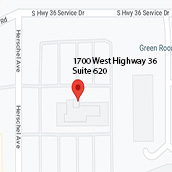How Can Road Signs Offer Better Night Time Visibility?
It is well-established that inadequate or unclear road signage can contribute to accidents and traffic incidents.
Common problems associated with poor signage include confusion, delayed reactions, and failure to comply with traffic rules.
Accidents resulting from these issues may include rear-end collisions, sideswipes, or vehicles running off the road.
To address the impact of poor signage on road safety, authorities often work to improve signage design, placement, and maintenance. They may also conduct investigations into the causes of accidents to identify any role that signage issues may have played.
One important aspect of road sign design is ensuring good night time visibility. Adequate night-time visibility of road signs is crucial for maintaining safety on the roads.
Various strategies and technologies are employed to enhance the visibility of road signs during nighttime. Here are some ways road signs can offer better visibility at night:
Reflective Materials:
Many road signs are coated with retroreflective materials. These materials reflect light back towards its source, such as headlights from vehicles, making the sign more visible in low-light conditions.
Common retroreflective materials include glass beads or microprisms embedded in the sign’s surface.
High-Intensity Sheeting:
Some road signs use high-intensity reflective sheeting, which enhances visibility at night and during adverse weather conditions.
High-intensity sheeting is designed to provide better retroreflection and durability compared to standard reflective materials.
Fluorescent Colors:
The use of fluorescent colors on road signs can improve daytime and nighttime visibility. Fluorescent materials are more reflective and can enhance contrast with the background.
LED Illumination:
Some road signs, particularly those in urban areas, may be equipped with LED (light-emitting diode) illumination. LEDs are energy-efficient and can provide bright, clear visibility at night.
LED-enhanced signs are often used for critical information or in areas with high traffic volumes.
Proper Lighting Design:
Adequate street lighting in the vicinity of road signs helps improve overall visibility. Well-lit roads make it easier for drivers to see and interpret the information presented on signs.
Contrast And Legibility:
Ensuring a high level of contrast between the sign and its background is essential for readability. This is particularly important at night when visibility is reduced.
Choosing fonts and symbols that are easily legible in low-light conditions contributes to effective communication.
Maintenance:
Regular maintenance is crucial to preserving the effectiveness of road signs. This includes cleaning reflective surfaces, replacing damaged signs, and ensuring that lights, if used, are in working order.
Uniformity And Standards:
Following standardized guidelines for road sign design, such as those established by transportation authorities, helps maintain consistency and ensures that signs are visible and recognizable to drivers.
Advanced Technologies:
In some areas, innovative technologies such as solar-powered lighting systems are used to illuminate road signs without relying on traditional power sources.
Driver Education:
Educating drivers about the importance of paying attention to road signs and adjusting their speed based on visibility conditions can contribute to overall safety.
If you are interested in environmentally-friendly road sign applications, solar-powered traffic lights and road signs are in use in various locations around the world.
Solar technology has been increasingly adopted for traffic management systems as a sustainable and cost-effective alternative to traditional grid-powered systems. These solar-powered devices typically consist of solar panels that capture sunlight and convert it into electricity to power the lights and signs.
The use of solar power in traffic management has several advantages, including reduced dependence on grid electricity, lower operating costs, and the ability to install traffic lights and signs in remote or off-grid areas.
By incorporating these strategies, road and highway regulating authorities can enhance the visibility of road signs. This will result in a reduced risk of accidents and improve overall road safety, especially during nighttime conditions.
Thank you to the personal injury team at Kervin Law, LLC for the above blog.






